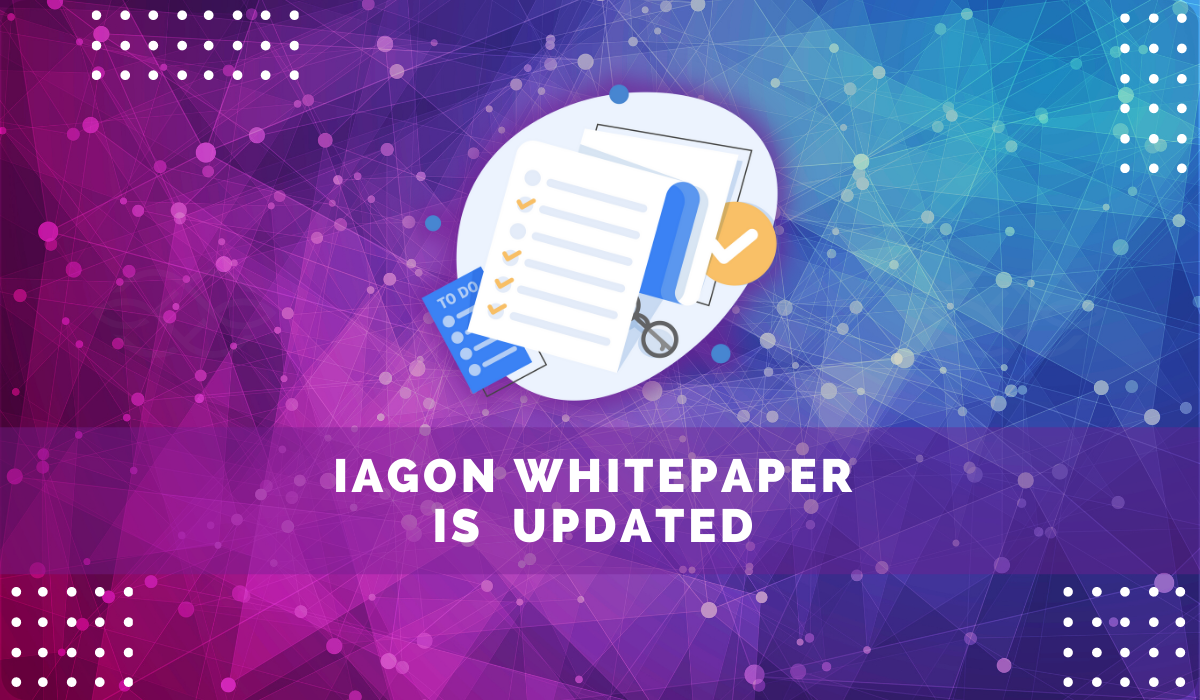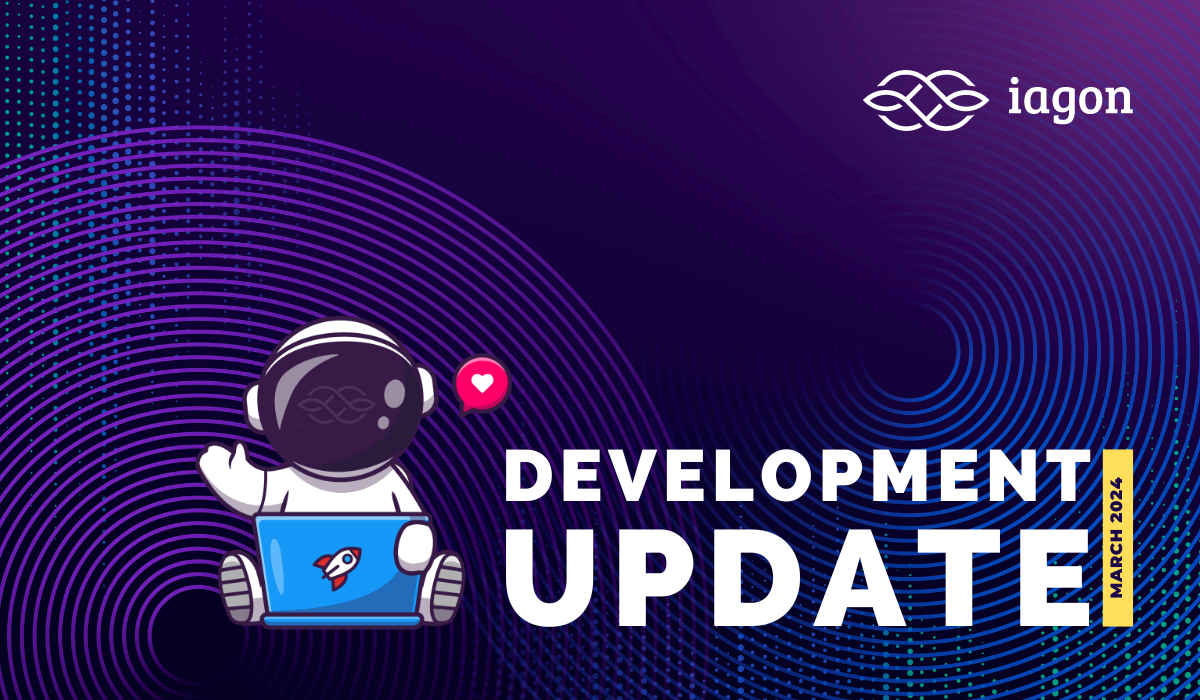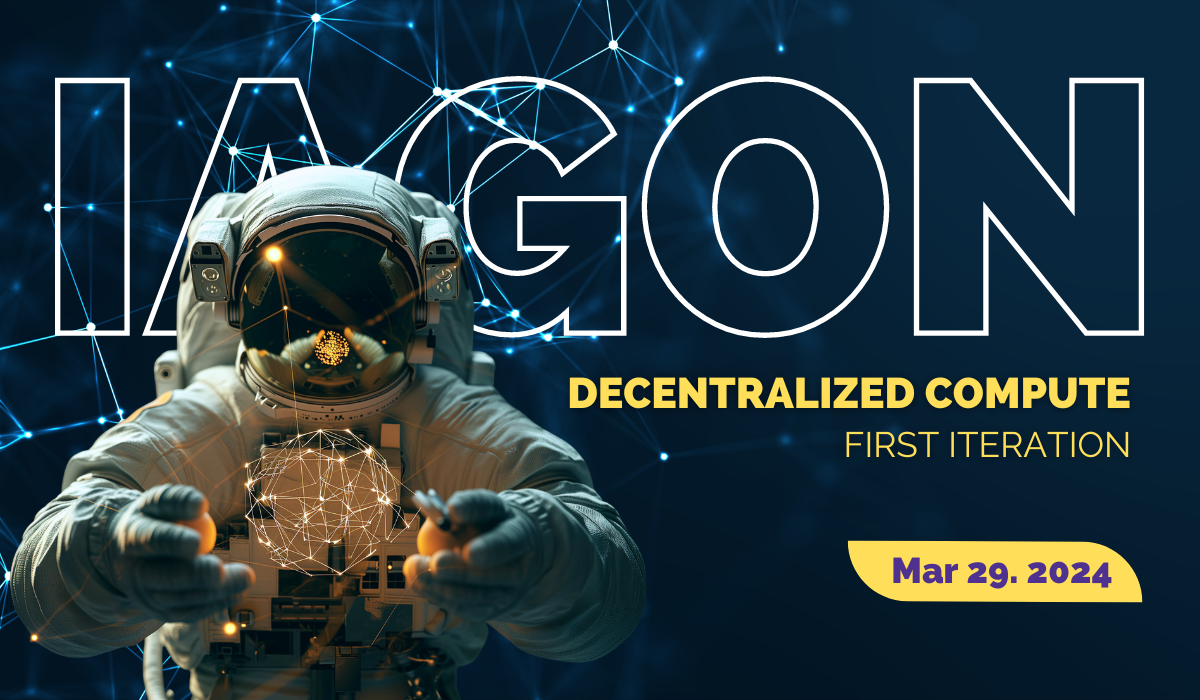“Everyone thinks of changing the world, but no one thinks of changing himself.” ~ Leo Tolstoy
We are happy to announce that we have updated our Whitepaper and that the new version is already available on our website. As our project is constantly under development, new challenges and opportunities arise, which means it is occasionally necessary to make certain adjustments and adapt to new circumstances. The following article will hopefully provide some answers for those wondering why we decided to revise the Whitepaper.
Why now?
Founded in 2017 in Norway, Iagon started out as a business with a clear yet ambitious goal. That fundamental idea was finding a way to solve problems concerning healthcare data management. It seemed that all the data storage solutions available lacked transparency or were not secure enough. Along with the project’s development, Iagon’s vision has evolved. It soon became obvious that a secure, decentralized data storage platform has vast potential and does not have to be limited to the healthcare industry.
An Ethereum-based project initially, Iagon’s shared storage economy moved to Cardano. We decided that Cardano’s strengths (sustainability, scalability, interoperability, cost efficiency, etc.) simply can’t be underestimated and open new paths of progress. However, switching to a blockchain relying on an entirely different consensus mechanism (Proof-of-Stake) required redesigning the platform’s architecture.
In the long run, Cardano aims to achieve blockchain interoperability. At Iagon, we perceive this as a chance to expand. Easier flow of data between blockchains should allow Iagon to attract more users which would result in further improvement of the service. In other words, we had no other choice but to incorporate this into our plans.
High-level architecture overview
As mentioned, the architecture of the protocol had to be redesigned. At present, it is comprised of 7 components:
- Iagon client application
It is designed for storage consumers who want to interact with the protocol. It comes in 3 variants, i.e. a web app, an Electron app, and a browser extension. - Cardano wallet
A wallet is used for user authentication in the process of data access (and, naturally, for payments). - Adagio
The objective of this component is to calculate rewards for storage providers. - Fermato
This interface allows the storage consumers to buy storage and manage existing subscriptions through the use of smart contracts deployed on the Cardano blockchain. - Rubato
This component acts as the storage marketplace. - Network Performance Explorer
This is a tool designed for measuring the performance of resource providers. It assesses various parameters such as uptime, connection speed, etc. - Node
A fundamental component of the Iagon’s network, the node is a computer running the client application. Anyone intending to become a storage provider is required to run the application on their machine.
Offering a helping hand
Hopefully, you remember Iagon’s mission defined earlier in the article. We set out to resolve certain problems related to the handling of vulnerable data.
One of these issues is the adoption of the data lake architecture by the big data market. The architecture relies on the implementation of a NoSQL central database that can store any kind of file. Such a repository is supposed to be accessible and user-friendly. That, however, exposes the data to malicious attacks. In case of a security breach, the intruder gains access to every single bit of information stored in the database. Iagon’s answer to this is our Secure Lake technology, based on decentralization, encryption, and sharding. Its implementation prohibits potential threat actors from gaining control over any data contained within a network.
As the years go by, it seems more and more tech companies are interested in collecting user-related data behind the users’ backs. All the information collected by tracking cookies is then either used internally (to improve the UX, for example) or shamelessly sold off to third parties, which is highly undesirable for obvious reasons. Iagon’s customers (storage consumers) will have the option to specify where their data should be stored and how it should be handled. One of the key features of the protocol is the ability to meet region-specific regulatory compliance requirements such as GDPR.
Hopefully, you do remember that Iagon is all about decentralization. Centralized web platforms are inherently flawed in one aspect. Once their infrastructure goes down (and it will eventually), you can bid farewell to your services. The financial impact of a power outage may be devastating to any IT company. At Iagon, we believe that this dependence can be easily cured with decentralization. A fully decentralized storage platform independent of centralized infrastructure guarantees stability and data accessibility.
Furthermore, decentralized architecture equals no central entity able to access the private data of the users. The users themselves are in full control, thus making it impossible for any third party to profit from leveraging the data. We firmly believe no one should be able to monetize your private information but you alone. That is why we decided to implement strict privacy policies, including a zero cookies policy. As a result, our users will be able to interact with the protocol anonymously.
Another problem Iagon wants to tackle is the cloud storage pricing, currently dictated by the major market players (AWS, Google Cloud, Microsoft, and IBM). Our mission is to revolutionize the storage market by creating a storage marketplace for everyone. The mechanics of the platform will guarantee transparent pricing.
Last but not least, we are concerned with the environmental impact of our services. After all, this was one of the main reasons Iagon moved to Cardano, one of the most environmentally sustainable blockchains. Its consensus protocol, Ouroboros, makes it far more energy-efficient than any blockchain relying on the Proof-of-Work mechanism.
Can we pull it off?
At this point, you’re surely wondering whether all this can be turned into reality. Rest assured, it definitely can be.
One of the instances is Agora, a decentralized storage platform built on top of the Iagon’s protocol. One of its principles is full transparency - all the files are visible to every user. If a file is suspected to be potentially harmful, it can be reported and, consequently, evaluated by a vetting committee consisting of users with an impeccable reputation. The reputation itself is, of course, far from arbitrary. A meticulously designed reputation model was introduced to ensure user credibility. When a file is flagged as inappropriate, the reputation score of the user who uploaded it decreases. Conversely, if the file is not flagged, the user's reputation score increases. Furthermore, to encourage engagement, users who vote to flag a file as inappropriate will earn reputation points. Having said that, anomalous behavior (e.g. coordinated downvotes or upvotes) is penalized by the system. What’s worth noting, in order to interact with Agora, users have to connect their Cardano wallets to the platform. As a result, active members of the vetting committee can be rewarded with IAG tokens serving as an incentive. In the future, wallet integration can also help turn Agora into an NFT marketplace.
While we’re on the subject of NFTs, the Iagon team ponders on a workaround for their immutability. What purpose would it serve, and how could it be achieved? Imagine an NFT representing a soccer player. If it could be continuously updated to reflect the player’s performance during a season, it would bring completely new possibilities to a blockchain-based game. To make it work, the NFT would have to relate to an object stored on the Iagon’s platform. This object would, in turn, act as a proxy to the actual data that could be modified.
Wait, there’s more!
So, we hope this article satisfied your curiosity regarding the reasons behind changing our strategy. If you want to get into details, feel free to dive deep into our new Whitepaper. You’ll find the complete document under the following link:




